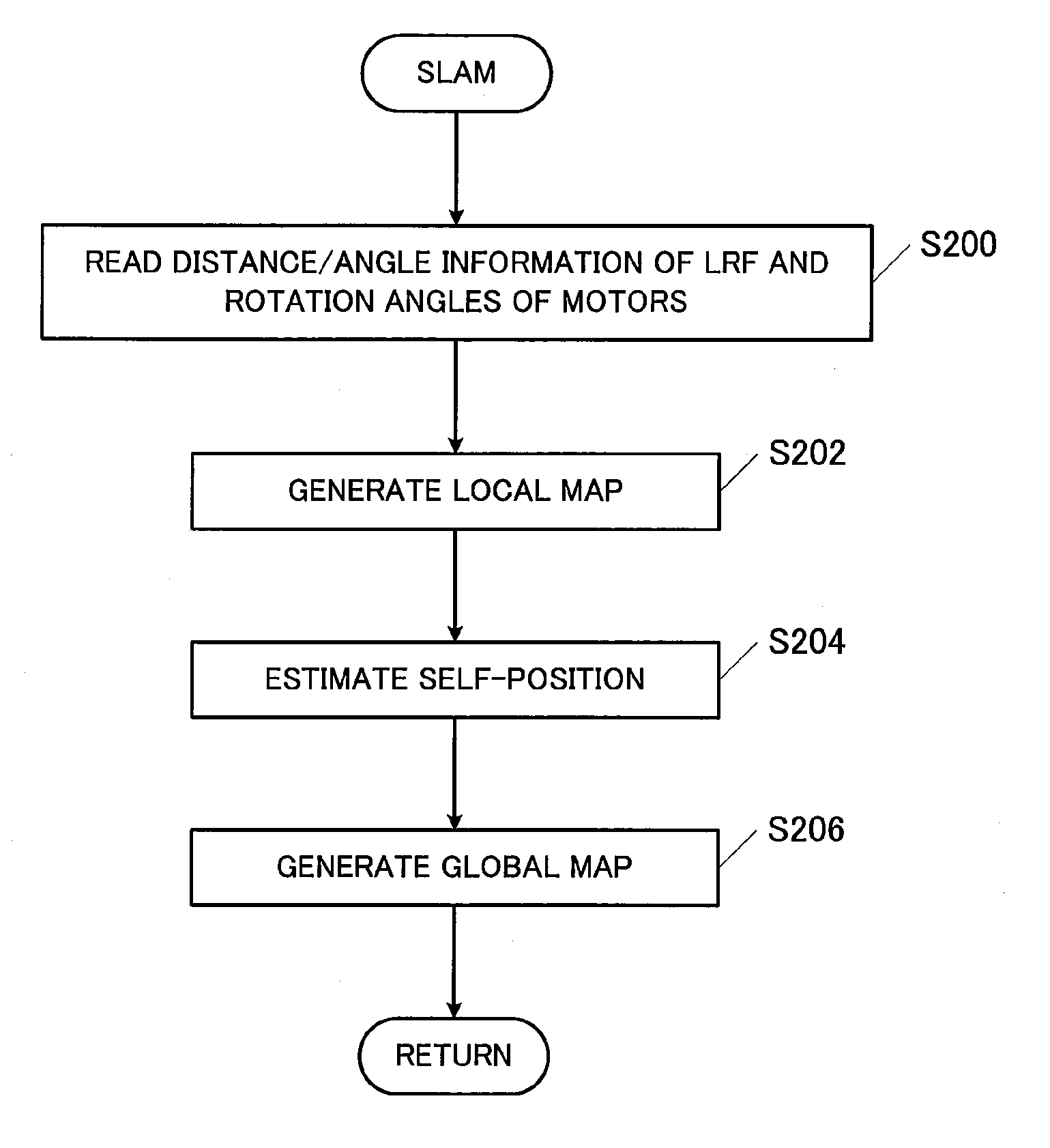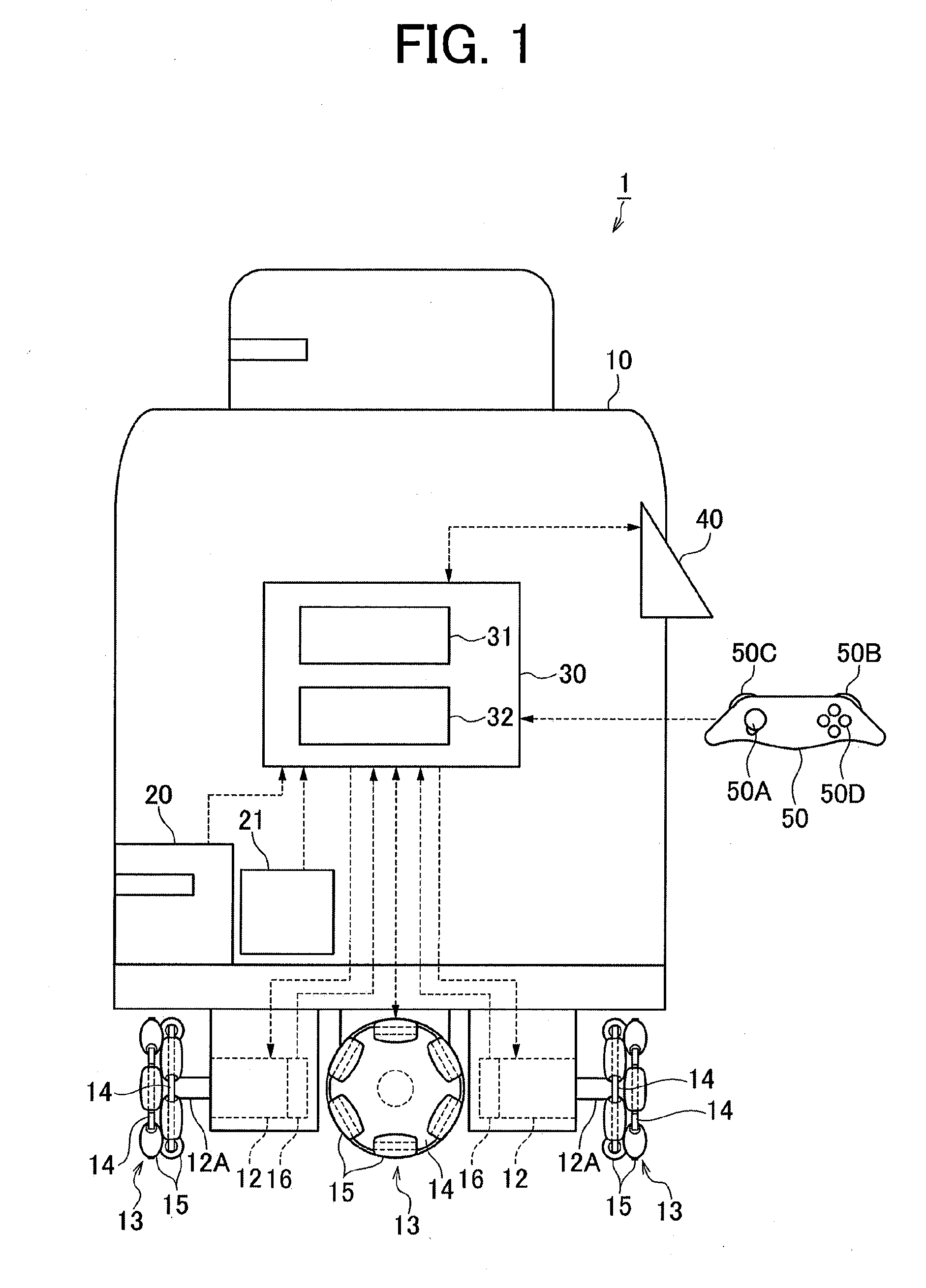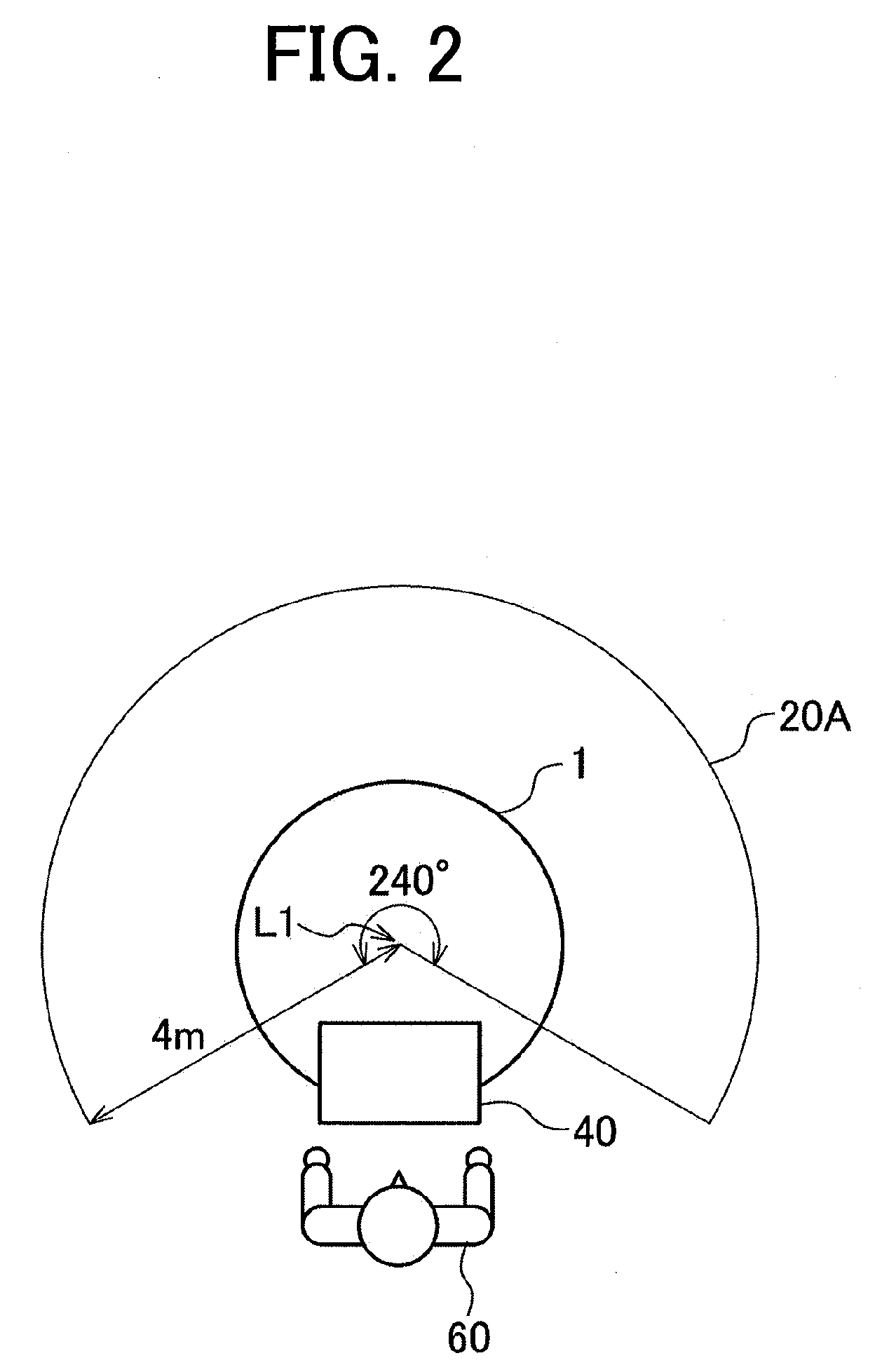[0007]According to preferred embodiments of the present invention, the reduction of the
estimation accuracy of a self-position and the increase of errors in the generation of a global map, both arising from posture changes (inclination variations) of an autonomous moving apparatus, can be minimized.
[0009]According to a preferred embodiment of the present invention, the distance information acquiring unit preferably acquires information about the distance between the apparatus and the
object based on the reflection state (such as
propagation time,
phase displacement, and displacement of propagation paths, for example) of the output detection wave, however, when the distance information acquiring unit is inclined, the self-position
estimation and / or the global map generation based on the distance information acquired by the distance information acquiring unit are stopped. Therefore, when the distance information acquiring unit is inclined, such as when the autonomous moving apparatus accelerates / decelerates, or when the autonomous moving apparatus makes (or is in) contact with an obstacle or the like (in other words, when a distance that is different from the distance that is supposed to be measured in a
normal state is likely to be detected), the
estimation of the self-position and / or the generation of the global map based on the distance information acquired by the distance information acquiring unit are stopped. Therefore, the estimation of the self-position and the generation of the global map based on the improperly acquired distance information can be prevented. As a result, the reduction of the estimation accuracy of the self-position and / or the increase of errors in the generation of the global map, both arising from posture changes of the autonomous moving apparatus, can be minimized. The idea of “generating the global map” includes an idea of “generating and updating the global map”.
[0011]When the state of inclination of the distance information acquiring unit is changing, the estimation of the self-position and / or the generation of the global map based on the distance information acquired by the distance information acquiring unit are stopped. Therefore, even when the distance information acquiring unit is inclined, unless the state of inclination is changing, the estimation of the self-position and / or the generation of the global map based on the distance information acquired by the distance information acquiring unit will not be stopped. Accordingly, the estimation of the self-position and / or the generation of the global map can be properly performed in a situation where the autonomous moving apparatus travels, for example, up a constantly-inclined slope in a constant posture.
[0017]The
laser range finder has a
high resolution and measurement accuracy in an
angular direction and a distance direction and can measure a distance between the apparatus and an object at high speed. Therefore, by adopting the
laser range finder as the distance information acquiring unit, the distance between the apparatus and the object existing in the surroundings of the apparatus can be accurately measured at high speed. In other words, the self-position estimation and / or the global map generation can be accurately performed at high speed.
[0022]According to the above preferred embodiments of the present invention, when the distance information acquiring unit is inclined, the self-position estimation and / or the global map generation based on the distance information acquired by the distance information acquiring unit are stopped. Therefore, in the autonomous moving apparatus arranged to estimate the self-position and / or generate the global map while moving, the reduction of the estimation accuracy of the self-position and / or the increase of errors in the generation of the global map, both arising from posture changes of the autonomous moving apparatus, can be minimized.
 Login to View More
Login to View More  Login to View More
Login to View More 


